
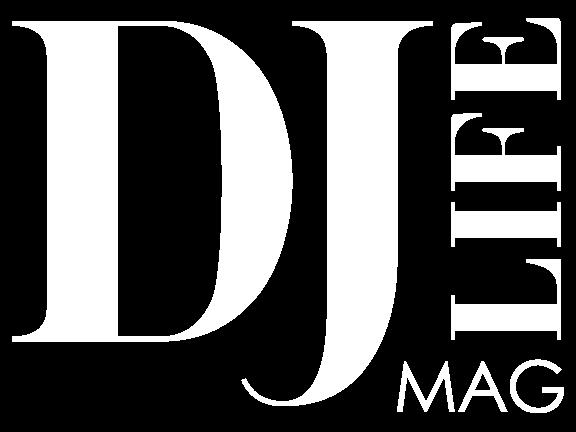

Photos by John Hohman/MetroMix




Photos by John Hohman/MetroMix
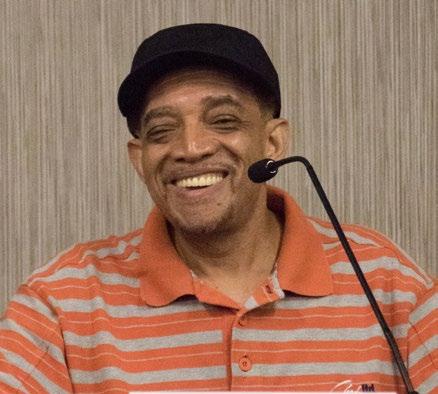
By Jim Tremayne
Atlantic City, N.J. – Back in the city where it all began with an inclusive “COME TOGETHER” theme, the 2025 edition of DJX hit a new milestone – the show celebrated its 35th anniversary.
Held this past Aug. 11-14 at the Hard Rock Hotel & Casino on AC’s legendary Boardwalk, DJX’25 once again delivered the goods as the industry’s largest, longest-running, and most impactful gathering of DJs in the Americas. Produced by DJ LIFE magazine and Hazan Media Group, the show presented its timetested combo of DJ-related technology exhibits, educational seminars, and sponsored After Dark parties.
Numbers: DJX’25 enjoyed a 6.3-percent increase in attendance from the 2024 show. The show had a 4.3-percent increase in paid all-access passes from the previous show. DJX’25 had attendees from 43 of the 50 United States and from 10 different countries.
Show: DJX’25 delivered a packed schedule of exhibits, seminars, and sponsored parties. The show saw participation from exhibitor/ sponsors like AlphaTheta, QSC, DAS Audio, ElectroVoice, RCF USA, Mackie, Cerwin-Vega!, Odyssey, Carnival Cruise Lines, Vibo, SMPL, JetPack, JMAZ

Lighting, and American Music and Sound (including Hercules, Reloop, Allen & Heath). Additionally, DJX presented its Summer Camp, Masterclasses, and The EDIT Studio.
Education: Along with its schedule of 35 topical seminars geared toward mobile, club, streaming, studio, and beginner jocks, DJX presented a trio of special “Keynote Q&A” sessions with industry notables. On Aug. 11, DJ White Shadow, the Grammy-winning DJ/ producer for Lady Gaga, discussed his successful career on the decks and in the studio. On Aug. 12, hip-hop radio legend Kool DJ Red Alert – presented by Moe & Joe Electronics – took a trip down memory lane with an hour’s worth of great stories. On Aug. 13, Canadian turntablist Scratch Bastid – presented by Twitch – discussed his rise through the ranks and how he established his ultra-successful Bastid’s BBQ parties. Other sessions included a CPR Certification class from Rachel Lynch and “Social Media Strategies for DJs” with DJ Cova and influencers Cleveland Terry, Jack Kristian, and “Justin the DJ” Stringfellow, plus sponsored seminars from AlphaTheta, Carnival Cruise Line, Max

Design, SMPL, Twitch, and Vibo.
After Dark: On consecutive evenings, DJX again presented the Sunset Sessions with networking events from QSC, AlphaTheta, and Mackie, featuring music, food and drinks.
On Aug. 11, BASSBOSS and The MixHer presented SelectHER, an early evening event that featured an all-female DJ lineup that included Carnival Cruise DJs Stardust, DJ ReRe and DJ Aye West. Later that night, at HQ2 at Ocean Casino Resort, a packed house enjoyed an evening with DJ White Shadow, who served up the hits and finished with set of old-school hip hop jams.
On Aug. 12 at The Pavillion inside the Hard Rock, DAS Audio and JetPack Bags presented its “Twisted Tuesday” party, which featured legendary turntablists Babu and Shortkut from The Beat Junkies, plus DJ Immortal, Buck Rodgers, Cleveland Terry, DJ Dynamix and LoveSlap.
On Aug. 13 at The Balcony in the Hard Rock, DJX presented B2B parties. First up, the “Sonic Evolution: 35 Years of DJX” party, cohosted by Jake Jacobsen and Mike Alevras, presented a cavalcade of mobile-
friendly talent. Sponsored by AlphaTheta, Jet Pack Bags, and RCF, the lineup included Matt “Matthadder” Radicelli, DJ Larry D, house DJ Kid Kasper, and Jimmy Strange.
Afterwards, Mell Starr & Friends presented its “Black & White Party.” Sponsored by AlphaTheta and RCF, the event included turntable masters Skratch Bastid, Shortkut, Buck Rodgers and host Mell Starr, who rocked it late into the night.
What’s New: DJX PopUp Dayz – a series of mobile events held in a fully wrapped DJX x DJ LIFE Lexus vehicle – ended the Road to DJX in AC after promoting the show at a variety of East Coast stops.
Prizes: Kelli Newsom of KelliVision in Twinsburg, Ohio, won the Ultimate DJ Giveaway. The winning system included products from the following exhibitor/ sponsors: Pioneer DJ by AlphaTheta; Rockville Audio; ProX; Moe & Joe Electronics; Odyssey; Walkabout Carriers; Ultimate Ears; Greenfeld Productions; and Other World Computing.
Show Dates: The next DJX is set for Aug. 10-13, 2026, at the same venue, Atlantic City’s Hard Rock Hotel & Casino.




’25: Sights & Sounds Top DJ Trade Show Marks 35 Years in Atlantic City By DJX Photographers

18
Mentorship & Why It Matters How Mentors/Mentees Help Create Community & Maintain the DJ Culture By DJ Hapa 12 In the Studio With…


Mason Siegel


We’re happy to report that this month’s cover boy, Duke Dumont, doesn’t let nostalgia bother him too much. In fact, Union , his latest full-length, is all about his pining for the U.K.’s early-’90s rave culture. And we’re better off for it because, with its mix of glowing, loved-up vibes, thrilling breakbeats and diva-led vocal vamps, Union is a blast, 32 minutes of dancefloor bliss. We caught up with the Brit-born/L.A.-based DJ/producer as he prepared for the six-stop North American leg of his 2025 tour.
Of course, in this issue we’ve offered a big recap of DJX’25, which concluded this past August 14 in Atlantic City, N.J. Held at the Hard Rock Hotel & Casino and presented by DJ LIFE and Hazan Media Group, the show celebrated its 35th anniversary… to which my inner-brain simply mumbles, “Whoa…” Nonetheless, we’ve offered readers more than a glimpse with our wrap-up story, exhibitor and attendee reactions, and an extensive photo spread. For more on DJX, please visit www.djxshow. com
As the summer festival season has wound down fully, we bring you looks from a pair of significant events, one celebrating its 5th year, the other just kicking off. The ARC Music Festival again brought some of our top house and techno talents (like Eric Prydz, Richie Hawtin and Nicole Moudaber) to Chicago’s Union Park for a three-day bash. Additionally, John Summit’s Experts Only Festival launched its two-day soiree at NYC’s Randall’s Island Park with a curated lineup that included Kaskade, Pete Tong and LP Giobbi. Also, in our Club Spotlight section, we check in on Marquee New York, as the newly renovated Manhattan venue re-opened with a massive weekend that featured Diplo, Steve Aoki, and Zedd.
In our Sound Bites section, we visit with Krewella’s Yousaf sisters, both of whom return from an artistic hiatus with a new outlook (and a new single). We also connect with the guys from Cheat Codes, who look back on a decade of hitmaking grooves, as they celebrate their tenth anniversary.
In our review sections, Brooklyn-based DJ Mike Márquez reviews the Hercules DJ Control Mix Ultra controller for our Playback section. Meanwhile, Denver-based DJ/ scribe Wesley King handles KRK’s Kreate series of monitors for our Studio Session column.
From the world of mobile entertainers, we head to Mansfield, Ohio, for a Mobile Profile visit with Bryan Gifford of SnagaDJ & Photobooth – he’s also the creator of the nifty Powerbooth One, which debuted at DJX ’25. Additionally, for our Business Line column, Canada’s Jordan St. Jacques discusses SocialJuice, a terrific tool for DJs looking to prevent bad online reviews. And in a feature that spans all sectors, DJ Hapa explains mentorship and why it matters in creating community and maintaining the DJ culture.
And yes, we do have confirmed dates/site for next year’s show – DJX’26 will run Aug. 10-13 at the Hard Rock Hotel & Casino in Atlantic City, N.J. Hope to see you there!
Cheers,

editor-in-chief
Jim Tremayne jtremayne@hazanmediagroup.com
editor-at-large Brian O’Connor boconnor@@hazanmediagroup.com
web editor and social media manager Mark Mancino mmancino@@hazanmediagroup.com
contributors Wesley King, Chris Caruso, Amanda Chavez, Shawn Christopher, Paul Dailey, Reed Dailey, Chris Davis, DJ Deets, Tony Fernandez, Tommy D Funk, Lexi Ferguson. Greg Hollmann, Danielle Johnson, Erik Miller, Lily Moayeri, Jordan St Jacques, Jeff Stiles, Ashley Teffer, Danny Turner, Phil Turnipseed, Joshua Volpe, Travis Wackerly, Curtis Zack
chart coordinator Dan Miller dmiller@hazanmediagroup.com
creative director Janice Pupelis jpupelis@hazanmediagroup.com
director of technologies and project management Steve Thorakos sthorakos@hazanmediagroup.com
Chairperson & COO/Co-Publisher Robin Hazan rhazan@hazanmediagroup.com
President & CEO/Co-Publisher Shawn Hazan shazan@hazanmediagroup.com
Jim Tremayne Editor, DJ LIFE


visit our website: www.djlifemag.com 516.767.2505
Editorial and Sales Office: DJ Life, Oyster Bay, NY 11771. (516) 767-2505 • (Sales/all other business): (516) 767-2505 • djlife@hazanmediagroup.com.
Editorial contributions should be addressed to The Editor, DJ Life Mag, Oyster Bay, NY 11771 or sent to JTremayne@hazanmediagroup.com. DJ Life Mag is published bi-monthly starting with the second month annually.
Design and Contents: copyright © 2025 by DJ Life Mag and must not be reproduced in any manner except by permission of the publisher.
Web: DJLifeMag.com DJXShow.com and HazanMediaGroup.com
Subscriptions: Complimentary Digital Edition. Email: djlifemag@hazanmediagroup.com Phone: 516-767-2505 ext. 502 Web: djlifemag.com/subscribe
| VOL.5 NO.5


From Immersive Projection Mapping To Live Vjing and LED Screen Visuals — We Transform Events Into Unforgettable Visual Experiences.


Music-synced visuals + live camera feeds for real-time energy and engagement. Transform walls, stages, or decor into living, breathing art with 3D visuals.

Live VJ‑ing Projection Mapping Event Recording LED Screens & Setup
Multi-camera recordings with clean audio, branding, and edits ready for YouTube or promo reels.

Dynamic LED walls or installations, custom-fit for stages, DJ booths, or interactive installations.
Why Halucinated Studios?
• NYC DOE & MBE Certified
• Trusted by brands, festivals, and creatives
• 10+ years experience in high impact visuals
• Fast, professional, and mind blowingly creative
Quick Setup, High Impact
Packages from $800 to Full-Scale Productions
Perfect for Clubs, Concerts, Corporate, Schools & Weddings



Atlantic City, N.J. – DJX’25 ran this past Aug. 11-14 at the Hard Rock Hotel & Casino in AC. Produced by DJ LIFE and Hazan Media Group, DJX presented DJ-centric exhibits, educational seminars, and sponsored After Dark events. Here are responses from show exhibitors and attendees:
“We look forward to DJX every year, and 2025 was no exception. Our entire team walked away inspired and excited by the energy and creativity from the artists and attendees, and we are continually honored that we are able to be a part of such a fantastic community.”
– Hector Escobedo, AlphaTheta Music Americas, Torrance, CA
“We love coming to DJX – every year the show keeps getting better and better! We’ve been doing this show for many years now and it has help our business grow in sales and in brand recognition. More than a traditional trade show, the overall experience and good vibes are what sets DJX apart.”
– Yen Lim, JetPack Bags, Santa Ana, CA
“As a business owner in the entertainment industry, DJX is one of the most valuable investments I make every year. The combination of top-tier education, meaningful networking opportunities, and the massive expo floor makes it a must-attend event for any professional looking to grow. This year’s DJX25 was no exception. Whether you’re a newcomer or a seasoned pro, DJX is not just
about the gear. It is about building a better business.”
– Chuck Zerambo, Sir Charles Distinctive Entertainment, Bristol, PA
“DJX’25 was nothing short of electric – every moment reminded us why this culture is so influential. Being there, connecting with DJs, brands, and innovators from all over the world, was both an honor and an inspiration,
– Mike Garrett, 2DJs/1 Mic, Dallas
“It was our pleasure. Thank you so much for having us out this year. We look forward to hopefully iterating for next year! Really enjoyed working together with the team.”
– Sydney Golombek, Twitch, Los Angeles
“We do almost all the conventions on the circuit, and I must tell you: Working with you is a breath of fresh air. Keep up the great work! We look forward to continuing to work together.”
– Matt Radicelli, Mentor Pods, Cleveland
“It was an absolute pleasure speaking on the sports panel at DJX’25. I truly enjoyed being part of the conversation and would be more than happy to participate on future panels or educational sessions whenever the opportunity arises. Overall, I thought the event was a great success.”
– John Murray, JAMMIN’ DJs/Atlanta Braves, Atlanta





When Krewella’s Jahan and Yasmine Yousaf first exploded onto the scene in 2012 with their Play Hard EP, they helped define a pivotal era in dance music. Soon after, their first smash singles, “Alive” and “Live for the Night,” accelerated their success within the circuit. Together, their blend of emotional lyrics and songwriting coupled with their bold stage presence helped propel them to global recognition.
They’ve since dominated nightclubs, airwaves, the charts, digital streaming platforms – and let’s not forget about the top music festival stages: Ultra Music Festival, Tomorrowland, Electric Daisy Carnival, and Coachella.
After years of touring the globe and redefining what it means to be women in dance music, Krewella took a step back to rediscover themselves creatively and personally. During their hiatus, Yasmine dove into other artistic projects and reconnected with her songwriting roots, while sister Jahan spent time studying classical Hindustani vocals and exploring a deeper emotional resonance through her music. The pause was necessary – a recalibration that reminded them of their purpose and passion. When inspiration struck again in early 2024, it marked not just a comeback, but a rebirth.
Now, after the powerhouse pair recently returned with a tingly new single, “Crying On The Dancefloor,” Krewella’s Yousaf sisters sat down with DJ LIFE
DJ LIFE: How did you spend your time during your hiatus from music?
Yasmine: After our last tour ended in summer of 2022, Jahan and I took an entire two years away from making music together. We had a handful of shows here and there, but our daily and main pursuits went outward, away from
Krewella. I went on a creative side-quest that I would love to talk about someday if it ever comes to fruition – I’m a fan of working in silence until I’m ready to share – but it energized me intensely and reinstated a confidence I’d been missing for quite some time. Jahan was working diligently on her voice, working with a classical Hindustani coach, and writing beautiful music in solitude.
DJ LIFE: How did you come back to music?
Yasmine: I hadn’t opened Ableton or even recorded a voice memo melody on my phone in exactly two years when I was struck with the desire in March of 2024. I spent about a month diving back in and wearing my producer/ songwriter hat again, until April when Jahan and I decided to officially, but gently, begin working on our next project together. It’s been a steadfast process since then of writing and rewriting until we feel peak authenticity, clearing out old habits and making way for new methods of creation, and sharpening my skills as a producer.
DJ LIFE: What was your approach to “Crying on the Dancefloor,” the first single following your hiatus?
Yasmine: The muse was with us the day we wrote it. In one long session, the song grew to about 85-percent finished. Every songwriting and production choice for that song was something that Jahan and I flowed with. There was little questioning ourselves – which, if you’re a musician, you know is very rare. Lyrically and thematically, we knew it was a special one, because of how it encompassed so much of what we’d been feeling – not only during our hiatus, but our entire career – and decided quickly that it would be our first release of the new era. We’ve had hard dance/techno-leaning tracks on many of our other
projects, but this one feels genre-expansive in a way the others may not because of how many different elements we blended together – from the acoustic guitar to the lullaby-esque melodies to the dark warehouse-inspired galloping bass.
DJ LIFE: How has Krewella’s creative process evolved over the years?
Jahan: We’re finding that in the past few years, our studio sessions are feeling more personal and emotionally deep with just the two of us. We still find so much inspiration and growth from collaborating with other producers, instrumentalists, and writers, but being in this intimate setting as sisters is really adding new layers to our relationship and creative flow. Our studio days have become like sister therapy sessions in a way, whether it’s us opening up about family struggles, grief over the state of the world, or reminiscing on our childhood. I also think my mindset going into the studio has also evolved.
DJ LIFE: How so?
Jahan: I used to bring so much pressure to the studio to make a “good song” and would feel anxious if I didn’t feel like I was contributing enough or offering anything valuable. At this point, we’ve found a way to find more joy in creating without worrying about the outcome and also accept the moments where the creative juices are dry, because even trees have to take a break from producing fruit – remembering we’re a part of nature can be so humbling.
When I picked up guitar in the pandemic, I discovered that having the freedom to let the voice flow with chords really supported the songwriting and lyric process. A few of our upcoming songs actually started off in this way, like a folk/pop song written on a bed, which completely transforms once we start building production around it. And one of our tried-and-true methods of writing over the years that we still use is looping a segment of a beat for several minutes at a time and spitting a bunch of gibberish over it. Whoever is outside the recording booth is usually listening for nuggets of gold that we’ll extract from the recording and to start crafting a song around. Having that time to purge whatever is in the subconscious can be so cathartic, too, because sometimes it’s a lot of garbage or self-consciousness mutterings that you need to get out of the system before you really start feeling free with your expression.
DJ LIFE: Career-wise, Krewella seemed to rise relatively quickly. What did you learn from that experience?
Jahan: We started in 2007 as a side project, while we were in school and had other jobs, and it was actually quite some years of incubation. When we started finally releasing music in 2011, it did feel like a quick escalation in growth of our fanbase, public attention, and touring opportunities – and, of course, pressure and stress came with those blessings. It felt like we were on a high-speed train that we couldn’t stop... like once we started gaining momentum, the thought of pausing to rest, or slowing down from touring to process life and have personal time, felt like it would ruin everything we had worked for.
DJ LIFE: The dance-music industry was going full-speed at that point.
Jahan: People were in our ears, and the team around us at that time were advising us to say yes to every opportunity – and that we had to completely milk that
moment of EDM, because we were being warned there wouldn’t be longevity. We were so naive and inexperienced, so we didn’t know there was any other way to do this career. We crashed hard, and it really humbled me… it forced me to look at how so much of my self-worth was based on what people thought of Krewella, how much music we were releasing, and how productive I was. In a way, I’m grateful for those low moments because we learned to take better care of our health, started working on our relationship as sisters, and re-connected with other parts of us outside Krewella, like our Pakistani roots. We have more respect for the natural process of ebbs and flows/highs and lows in a career now.
DJ LIFE: From a live standpoint, what are some songs you think you’ll always include in your sets?
Jahan: Our classics from back in the day, like “Enjoy The Ride,” “Live For The Night,” and “Alive,” to bring some nostalgic magic to the night. “Beggars” and “Ring Of Fire” for a mosh pit. “Team” and “Alibi” for an uplifting downtempo break to hug a friend. “Ghost” and “New World” for the bad bitches. “Come And Get It” to feel 21 again.
DJ LIFE: What’s in your studio?
Yasmine: Ableton Live is king, in my personal opinion. Universal Audio Apollo x6 interface. Audeze LCD-X headphones or Airpods Max for on-the-go, Neumann KH 310 monitors and KH 750 sub at my home studio. My partner and I built our home studio from the ground up and it’s my favorite place to work in the world. We’ve recorded most of our vocals from the last five years on the Sony C-800G mic, Manley Reference Cardioid Tube mic, or the Slate Digital VMS. The Manley is the best, though, for the range in frequencies of both mine and Jahan’s voices.
DJ LIFE: What about plug-ins?
Yasmine: My non-negotiables for plug-ins, outside of flexing the Ableton stock ones as much as possible: Xfer Records Serum; Output’s whole lineup – amazing for getting yourself out of writer’s block; Waves Ultimate Bundle – vocal-chain madness; Kilohearts, but specifically their transient shaper – none is better; Baby Audio’s Smooth Operator and Humanoid; iZotope’s Ozone and VocalSynth; Cymatics Shockwave for the best 808s and Dark Sky for incredible texture layering; Dada Life’s Endless Smile for that classic riser/sweep energy; Valhalla’s lineup for unrivaled reverb; Cableguys/Nicky Romero’s Kickstart for the best sidechaining of your life; Soundtoys entire lineup, but Little AlterBoy is peak; and, of course, FabFilter Pro-Q 3 and 4 and Pro-L2. You don’t need any of these, but they make the process of creation more exciting for sure.
DJ LIFE: What advice would you give to aspiring DJ/producers?
Yasmine: Start as soon as possible, and if you’ve already started, just release music and get out there. The more time you give yourself to experiment, grow, release your music into the world and get to the next level, you will 100-percent have less regret in your life. The dream is still alive and well, if not more now than ever. More help and tools, more connectivity online, more fans who are listening to electronic music, more hunger for authentic artists who love to make and DJ this kind of music. The golden era of EDM may forever be talked about as 2010-2014, but we’re in a wave currently that I believe will be talked about the same way in 10 years.
– Mark Mancino

The Los Angeles trio Cheat Codes has spent the last decade defying genre boundaries and rewriting the rules of what a modern electronic act can be.
With more than 6 billion global streams, Platinum- and Gold-certified records across continents, and collaborations ranging from Demi Lovato to Dolly Parton, the group – KEVI (aka Kevin Ford), Trevor Dahl, and Matthew Russell – has carved out a career that thrives off experimentation and reinvention. Their sound is a mixture of electronic, pop, dance, and even country, but their core mission remains the same: to make music that feels fresh, fun, and true to who they are.
The journey began humbly – bedroom beats, DIY sessions, and raw energy poured into tiny club gigs. Those roughand-ready beginnings, complete with chaotic first sets and over-prepared playlists, helped shape the foundation of their now world-touring live experience.
Fast forward 10 years, and the Cheat Codes name has become synonymous with collaboration and innovation. Whether it’s their Hellraisers trilogy, their genre-bending One Night in Nashville
project, or their latest vision, Future Renaissance , the trio continues to embrace evolution as a guiding force.
As the group prepares to hit global stages once again – and share their boldest project yet – Cheat Codes are showing no signs of slowing down. We recently caught up with the talented trio.
DJ LIFE: Did you get your start as DJs or producers?
Matthew Russell: For us, it was always a mix of both, but producing came first. I was messing around with beats in my bedroom in St. Louis, Trevor was writing songs as Plug In Stereo, and KEVI was actually a rapper. When we linked up in L.A., we were making tracks before we ever owned any CDJs. DJing came as a way to bring our productions to life –those early club gigs were us testing our sound live, figuring out what made crowds move. Producing gave us the foundation, but DJing was like the spark that turned Cheat Codes into a live experience. It was
definitely learn-as-you-go. I remember some of our first shows and none of the tracks really flowed or made sense together. Now we’re constantly making live edits and thinking about how the set flows as a whole 90-minute journey.
DJ LIFE: What were those early DJ gigs like?
Russell: Our first gig together was this tiny club in San Francisco, probably 2014, and it was chaos in the best way. I remember Trevor and I were so nervous we overprepared, like, we had this setlist planned to the second, but KEVI was like, “Just vibe with the crowd!” The booth was cramped, the sound system was sketchy, and we were figuring out how to transition without clearing the dancefloor. We were opening for Cut Snake, which DJ Fisher was a member of. We essentially just played our songs that were on Spotify and there were no real transitions. Early days were raw – small venues, late nights, and a lot of trial-anderror. We’d play our early tracks,
like “Visions,” and watch people’s reactions to tweak them. Those gigs taught us how to read a room and not take ourselves too seriously.
DJ LIFE: How did you ultimately decide to call yourself Cheat Codes?
Trevor Dahl: Honestly, Cheat Codes… the name kind of sparked the inspiration for the music. We did it in reverse to a lot of groups, I would say. The name Cheat Codes came from KEVI’s brother, who was talking about finding the “cheat code” to life – doing what you love, no rules. It clicked instantly because we’re all about breaking the mold, blending genres, and just having fun. We knew it was the one when we said it out loud for the first time.
DJ LIFE: What’s your DJ-gear evolution been like?
Ford: Back in the day, our set-up was bare-bones. We had a Pioneer DDJ-SX, some cheap monitors, and a laptop running Serato that crashed half the time. We were lugging gear to gigs in my old car, praying it wouldn’t break down. Now? Our setup’s a whole different beast –Pioneer CDJ-3000s, a solid mixer like the DJM-900NXS2, and we’re running custom visuals synced to our sets. We’ve got a team helping with production, but we still keep it hands-on to feel that raw energy. The biggest change is confidence – we know our sound now, so the gear’s just a tool to amplify that.
DJ LIFE: What are your studio preferences?
Russell: We’re die-hard Ableton Live guys, but when we first started Cheat Codes, our early records we used Pro Tools. Once Ableton became more popular, we started making the instrumentals in Ableton and then just edited vocals in Pro Tools. And then once Ableton added audio comping, it was game over – we never used Pro Tools again.
DJ LIFE: How do you guys work together?
Russell: These days, we’re hybrid – sometimes we’re all in the studio vibing, passing ideas back and forth; but we also work a lot remotely via Zoom or sending stems. I’ll start a beat, Trevor might add a topline, and KEVI will chop it up into something wild. It’s like a musical hot potato. We keep it loose, so the creativity doesn’t feel forced. For example, I was in the session for our song “More Than
Anybody .” We finished the demo with Izzy Bizu on the vocals and sent it to Trevor. He had the idea of a sax solo lead on the drop. He made it with a Kontakt instrument. I wasn’t really feeling it, but we kind of joked, “Well, maybe if this is played by some dope saxophone player like Kenny G then it would work.” And KEVI actually made it happen… slid into Kenny’s DMs and he actually responded. Teamwork makes the dream work.
DJ LIFE: Can you share some of your collaborative process and what it was like working with CeeLo Green?
Dahl: Working with CeeLo on “Go To Hell” was next-level. Our collab process is all about vibe – someone throws out a spark, like a melody or a concept, and we build from there. For this track, we had this gospel-sounding, cinematic idea, and we knew CeeLo’s voice could make it epic. We sent him the demo, and he got it right away – he came in with this largerthan-life energy, layering these soulful, gritty vocals that gave the track so much depth.
Ford: We got to hang out on the video shoot and just hearing his stories about Gnarls Barkley and how the song “Crazy” came about was really inspiring. I guess the track that Danger Mouse played CeeLo was meant for someone else, but CeeLo was instantly inspired. It’s stories like that that remind you how anything can happen when it comes to creativity and music – you just gotta keep showing up.
DJ LIFE: Your new album is Future Renaissance . What does the idea of a “renaissance” mean to you?
Russell: Future Renaissance is our love letter to where we’ve been and where we’re going. To us, “renaissance” means rebirth—taking everything we’ve learned over a decade and reinventing it with fresh energy. Personally, it’s about growing as artists and people, not being afraid to evolve. Creatively, it’s us saying, “Screw genres, let’s make what feels right.” This album blends electronic, pop, even some gospel vibes, reflecting all our roots. It’s like a time machine that’s nostalgic but futuristic, pulling from our early SoundCloud days and pushing into new territory.
DJ LIFE: What was the album-making process like for you guys this time around? How many tracks did you create for this album vs. how many ended up making it onto the album?
Dahl: The process for Future Renaissance was intense, but fun. We probably made over 50 tracks, experimenting with everything from straight-up dance bangers to weird, left-field ideas. We whittled it down to 12 or so that really told our story. It was like curating a playlist of our souls – each track had to fit the vibe. We’d start with late-night jam sessions, sometimes just messing around with a guitar or a random synth patch, then refine it over months. We worked with so many incredible artists, and their input shaped the sound. It was less about perfection and more about capturing moments that felt real.
DJ LIFE: How long did the album take from start to finish? What was the process like?
Ford: Future Renaissance took about two years from the first ideas to the final mix. We started in early 2023, just throwing around concepts, and wrapped it up by mid-2025. We had a mix of in-person and virtual sessions –probably 60/40 in-person. Most of the songs were started in-person and then we send files around to finish them. When we’re in the same room, the energy’s unmatched; we’re feeding off each other, riffing, and laughing. But virtual’s clutch when we’re on tour or working with artists across the globe.

DJ LIFE: Which process do you prefer?
Ford: I prefer in-person for that raw connection, but virtual keeps us moving fast. It’s all about balance. One of the things we wanted to do was reconnect with some writers who we worked with on previous records – for example, our friend Jackson Foote who wrote on “No Promises” and our friend Bryn Cristopher who worked on “Never Love You Again.” It’s good when you feel comfortable with writers who already know the vibe you’re going for. So we got in the studio and that’s how we came up with the demo for “Go To Hell.”
DJ LIFE: What’s on the horizon for Cheat Codes?
Russell: The rest of 2025’s gonna be massive. We’re hitting the road hard to support Future Renaissance, going back to Europe for the first time in years with some festival dates and a headline tour in the works – expect some crazy live moments with surprise guests.
– Mark Mancino
“Union”

By Jim Tremayne
With his respectable amount of club and radio smashes, you may be right to think of Duke Dumont as a global hitmaker. Indeed, a decade ago, a flurry of superb, housey club cuts – like “ Need U (100%),” “I Got U,” “Won’t Look Back,” and “Ocean Drive” – found a larger audience and made him a much-in-demand DJ/producer.
But, if you talk to him these days, it seems that seeing his tunes climb the charts or stream big numbers isn’t what gets him up in the morning. And don’t even talk to him about playing the modern, music-industry game of algorithms to facilitate such things. He blithely dismisses that part of the job.
No, he’s an artist who’s simply interested in making great music and performing well for his fans – whether it’s a straight DJ gig or a big-production live show. If you want proof, check out Union , his latest full-length.
Unlike many albums from top EDM DJ/artists, Union (Astralwerks) is the furthest thing from a slapdash collection of singles. Instead, Union is much more conceptual in that it’s a beginning-to-end experience that harkens back to an earlier time in dance music, an era when the club ruled and one’s sensory experience was solely dependent on the dancefloor and the DJ’s music. No showboating, no unnecessary frills. Simple and perfect, it’s the music and just you and your friends on the dancefloor.
Dumont calls Union “a cohesive, emotive rave journey” and “a homage to this unique experience.” Going further, he says that “the entire essence of the album is channeled
to create that feeling.” He succeeded.
An expedition full of dreamy hooks, nervy, pulsing rhythms, big synth swooshes, and powerful diva spotlights, Union captures that glowing, loved-up, early ’90s vibe with 32 minutes of bottled euphoria. Uplifting cuts like “The Chant” and “ENERGY” ascend and percolate, while other standouts like “Feels Like This” and the single “My Heart (Is Full of Love)” embody the rave ethos with glistening, you-are-there moments.
We recently caught up with Brit-born/L.A.-based Dumont, as he prepared an upcoming tour, which will include six North American dates in November and December.
DJ LIFE: Let’s get into the new album, Union . It’s quite a difference from Duality , your previous full-length. It’s more stripped-down, and it feels like a full-on, immersive club experience. What was your approach to Union , as opposed to Duality ?
Duke Dumont: Union had more intent… the intent being a cohesive, emotive rave journey from start to end. I took the approach of making an album as a whole, and not on a song-by-song basis. Good for the soul, bad for the algorithm.
DJ LIFE: It has a very you-are-there vibe…
Dumont: I’ve come to realize there aren’t many things in life that bring people together on one level. Union is a homage to this unique experience. The entire essence of the album is channeled to create that feeling. Each song was made with the live experience in mind. Again, the album

was made to be listened to in its entirety – from start to finish – and absorbed in a live-music environment. It was not made to appease playlists or radio. It’s intended to take the listener on a journey, not provide a quick fix.
DJ LIFE: On Union , you really seem to be revisiting breakbeats… tunes like “My Heart (Is Full of Love),” “Hit Em,” and “Ain’t Giving Up” really take me back to a time in clubland and the rave world when you heard that all the time. What was the impetus for tunes like those?
Dumont: Unconsciously, probably a homage to ’90s U.K. rave culture, especially on “My Heart.” There’s an honesty with nostalgia... Having lived overseas for 10 years, I wanted to make the album a uniquely British record… not because of patriotism, politics, etc., but because of homesickness and a love for rave music.
DJ LIFE: You have some really strong vocal collabs on Union , and very different ones. Talk a bit about “Feels Like This” with Tony Walsh, as opposed to the more soulful cuts like “Ain’t Giving Up” with Clementine Douglas. What went into those?
Dumont: The embryo of the idea and direction starts from my end. With Clementine, it was different from Tony. Clementine, I had a basic idea. She completely understood the objective, and we recorded in Los Angeles and London. Tony was different. I had sampled a previous poem he had written and performed, but we decided to go with an original piece instead. So, when I was in Lon-
don, he caught a train from Manchester for the day, and we recorded.
DJ LIFE: Musically, what were your first influences?
Dumont: Late-1990s dance music. Seeing dance music on “Top Of The Pops,” a U.K. music show on television. Then, around 16, becoming more regionalized with U.K. Garage being massive in Northwest London. Then that migrated to deeper house music. Combine that with a game on the PlayStation called Music 2000, which was a music-creation game with sampling time, and that’s what made me catch the music-making bug.
DJ LIFE: What made you want to pursue music seriously?
Dumont: I was fired from a job, and luckily, I made a living from music within three months. I wouldn’t have had the security or confidence to pursue music full-time if that hadn’t happened.
DJ LIFE: You grew up in a dance-music culture in the U.K. that was and remains massive. Can you remember an artist or a couple of dance tracks that really caught your attention?
Dumont: The 0 A.D. moment for me was Daft Punk’s Alive 1997 , live in Birmingham CD. Obviously, it’s not a dance track, but a live set of their album. That CD gave me a meaning for what I wanted to do... not necessarily copying the sonic, but making a collection of music to play in that way. I still hold that CD as the gold standard for dance music.
DJ LIFE: How much of a clubber were you when you were young? What are your memories?
Dumont: Honestly… hated it. From 16 to 18 years old, I only experienced carpeted nightclubs in Watford and Northwest London – 2-Step was at its height. Witnessing people being bottled and fights every night. In my early 20s, when I started going to events in Central London that changed a bit. The violence of an average night out didn’t exist. People look back at a certain era with rose-tinted glasses – in reality, it fucking sucked.
DJ LIFE: In the modern era, how do you see the differences between the European fans of dance music and those from North America?
Dumont: Europeans expect more musically, but less of a show. Americans expect more of a show, but less musically.
DJ LIFE: How did you move into DJing? Did you ever learn any traditional instruments?
Dumont: I play keyboards badly and learned to DJ on Soundlab belt-drive turntables. I did it all at the same time. Learning how a DAW worked is what gave me a career.
DJ LIFE: What would you say was your biggest break in the DJ game for you?
Dumont: Very early on, having an agent to get me $400 shows up and down the U.K. After that, when I couldn’t get any DJ bookings, having multiple No. 1 records around the world, etc.
DJ LIFE: What age were you when you began to create music? Were you doing remixes or full-productions? What was your evolution there? In an old interview with us, you mentioned that you were trying to replicate ’90s R&B records…
Dumont: I started creating music when I was around 16-years old. Then my ability grew with the technology I could obtain. I started off by being commissioned for remixes. At a certain point, I retired from remixing. It’s a broken business, and a remixer gets a set fee, but nothing on the writing. Rarely benefits the remixer. Not sure if I said I’m trying to replicate ’90s records [Laughs.] Maybe I did? A lot can be learnt from vocal production from early ’00s R&B records, though.
DJ LIFE: Do you have any kind of process to the studio work? How do you maintain your focus and productivity?
Dumont: I try to find something to hinge a record around. If it gives me an emotive feeling within the first 30 minutes of making it, I try to develop it, hoping that others get that same feeling when they listen.
DJ LIFE: Your sounds have always struck me as something classic, as I mentioned, but always moving forward musically. I think the tunes (“Need U,” “Ocean Drive,” “I Got U,” etc.) that made the world notice you have really stood the test of time. How do you view those tunes now and what was it like for you to get known world-wide with Grammy nominations, big gigs, and global tours?
Dumont: The music side to me is still magic. The rest – as in, the business – not so much. I have an appreciation for fans and concert goers more than I ever realized. The magic is from creation to listener. Everything in the middle is dirty – contracts, negotiations, social media, streaming numbers, etc. Now I have a commitment to provide a level of show to concert goers, regardless of how much I make on the backend.
DJ LIFE: Will this coming tour be a “live” show or a straight-up DJ gig? What should fans expect and what kind of experience are you looking to provide?
Dumont: For this year, I’ll be DJing, but 2026 will be 2.0 of my live show.
DJ LIFE: In an old interview with DJ Times , you detailed your hearing issues and how you dealt with them at an early age. How is your hearing now, and does it affect your performances at all?
Dumont: I was born partially deaf. Surgery helped correct it. My hearing right now in my left ear isn’t good because of the damage from DJing, but I have a couple of years left of being able to make music.
DJ LIFE: These days… from your main studio gear, what’s your DAW? Monitors? Fave plug-in?
Dumont: Ableton Live. Adam monitors, and a lot of software. Favorite plug-in is probably u-he DIVA synth.
DJ LIFE: Are there DJ/producers that you admire?
Dumont: I don’t think I put anyone on a pedestal anymore. I’ve been doing this too long. But there are a lot of acts I have a huge amount of respect for… whether old or new.
DJ LIFE: In the DJ booth, what gear do you use and why?
Dumont: Standard Pioneer CDJs and DJM. I don’t have recordbox or Sync. It’s not because I’m auto it. It’s because I’m too lazy to learn. But I also don’t like the way sync makes records sound. It ruins anything more house sounding. But on grid, tech-house stuff, it handles well.
DJ LIFE: Are you using the newer DJ technologies like stems?
Dumont: For DJing, no. For production, I embrace new technology more so.
DJ LIFE: How has your approach to the DJ craft evolved over the years in both clubs and festivals?
Dumont: Understanding the expectations of the environment you play in is key. Festivals are competitive in nature, with each act trying to outperform the others. Clubs ought to be about the night as a whole, from start to end.
DJ LIFE: What are three tracks that are always in your DJ box?
Dumont: Outside of my records, I’d say: “Bring It On Down” by Ramon Tapia: the Ejeca Remix of “Ministry of Love” by Romanthony; and “Feelin’” by Ivory.
DJ LIFE: What have been your most memorable gigs so far?
Dumont: Creamfields, 2025, The Slam Tent at T In The Park circa 2012-2014, and Sony Red Studios LA.
DJ LIFE: Where are your favorite places to play?
Dumont: When I started, it was Fabric in London. It’s where I learnt to DJ. Venues? I’m not too sure, but for cities it’s Dublin, Manchester, and Melbourne. I’m starting to take on more gigs in places I want to visit, such as Tokyo.
DJ LIFE: What motivates you to create music and play shows?
Dumont: I don’t have a motivation, to be honest. Motivation and passion are different. Motivation allures to ambition. I have a passion for music making, and a respect for the audience to provide a good experience.
DJ LIFE: After this album and tour, what’s next from Duke Dumont?
Dumont: My third album and my live show 2.0 – both in in 2026.

Enjoy portability without compromising on power.
Sublim8 is an all-new 3-way column system with included wheel cart and covers.

bassboss.com/sublim8
Photos by Ronald Mungo & John Hohman/MetroMix.

Atlantic City, N.J. – With its “COME TOGETHER” theme, DJX celebrated its 35th anniversary this past Aug. 11-14 at AC’s Hard Rock Hotel & Casino. Produced by DJ LIFE magazine and Hazan Media Group, the show presented technology exhibits, educational seminars and sponsored After Dark events. It all looked like this:

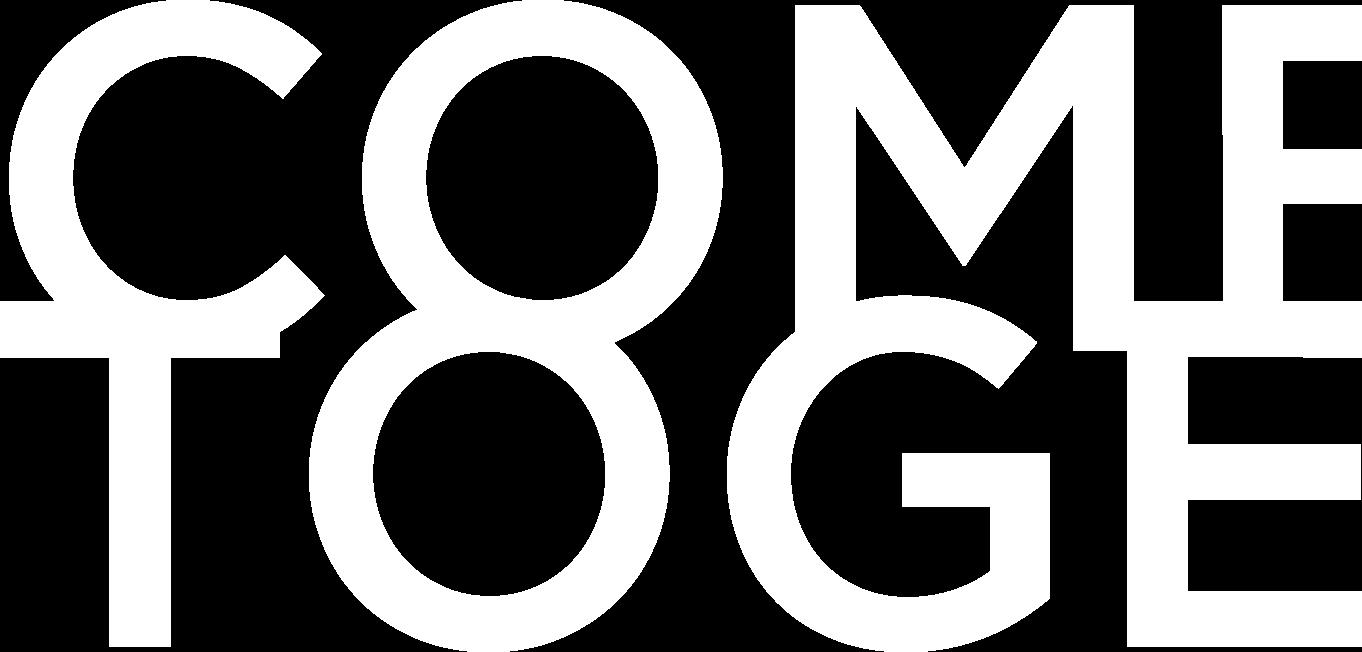





3 4 5 6 7

















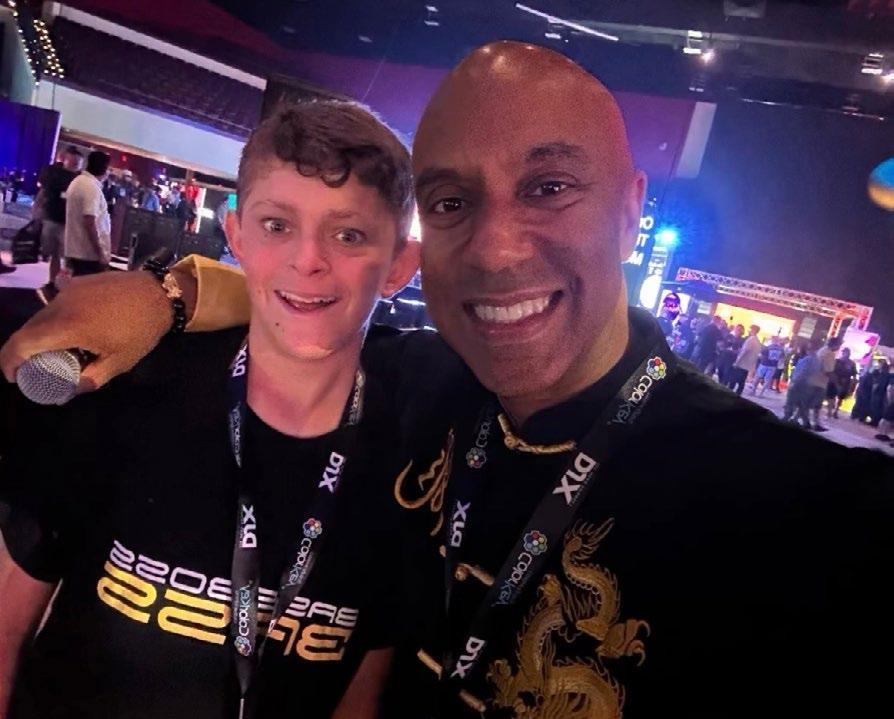









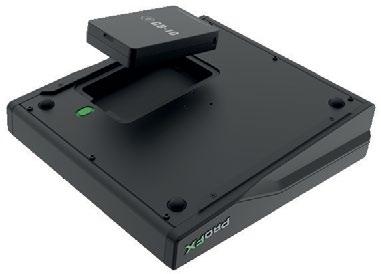




Chicago – Boasting a lineup of top house and techno talents, th e fifth-annual ARC Music Festival was held this past Aug. 29-21 at ChiTown’s Union Park. Produced by Auris Presents, the three-day event featured top genre jocks, including Eric Prydz in all of his aliases (Cirez D, Pryda and Eric Prydz), Jamie xx, John Summit, Amelie Lens, Richie Hawtin, Nicole Moudaber and Fisher. It all looked like this:







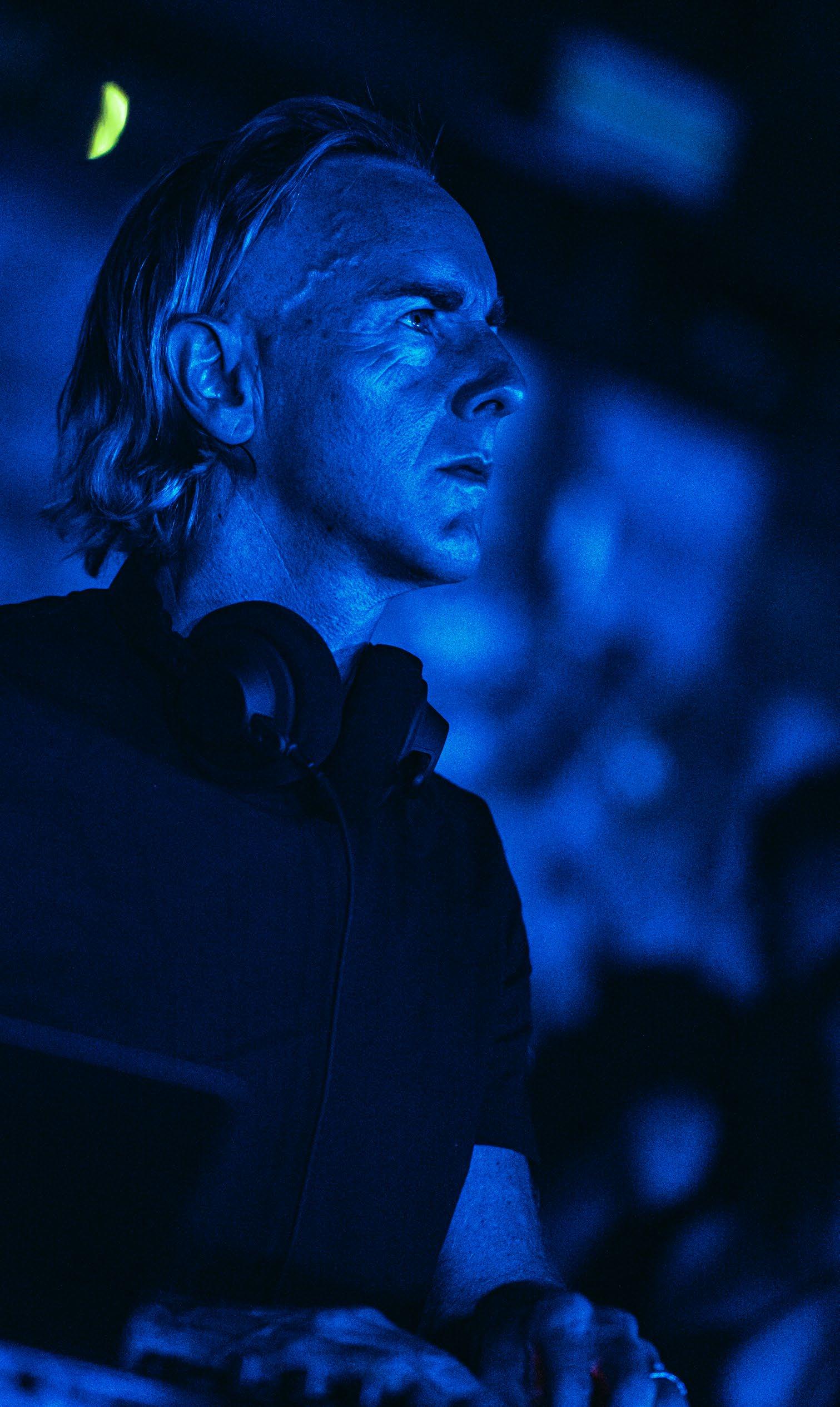



BY CATHY GUETTA
Missed us at DJX’25? Don’t miss more gigs & Sign up to get more bookings
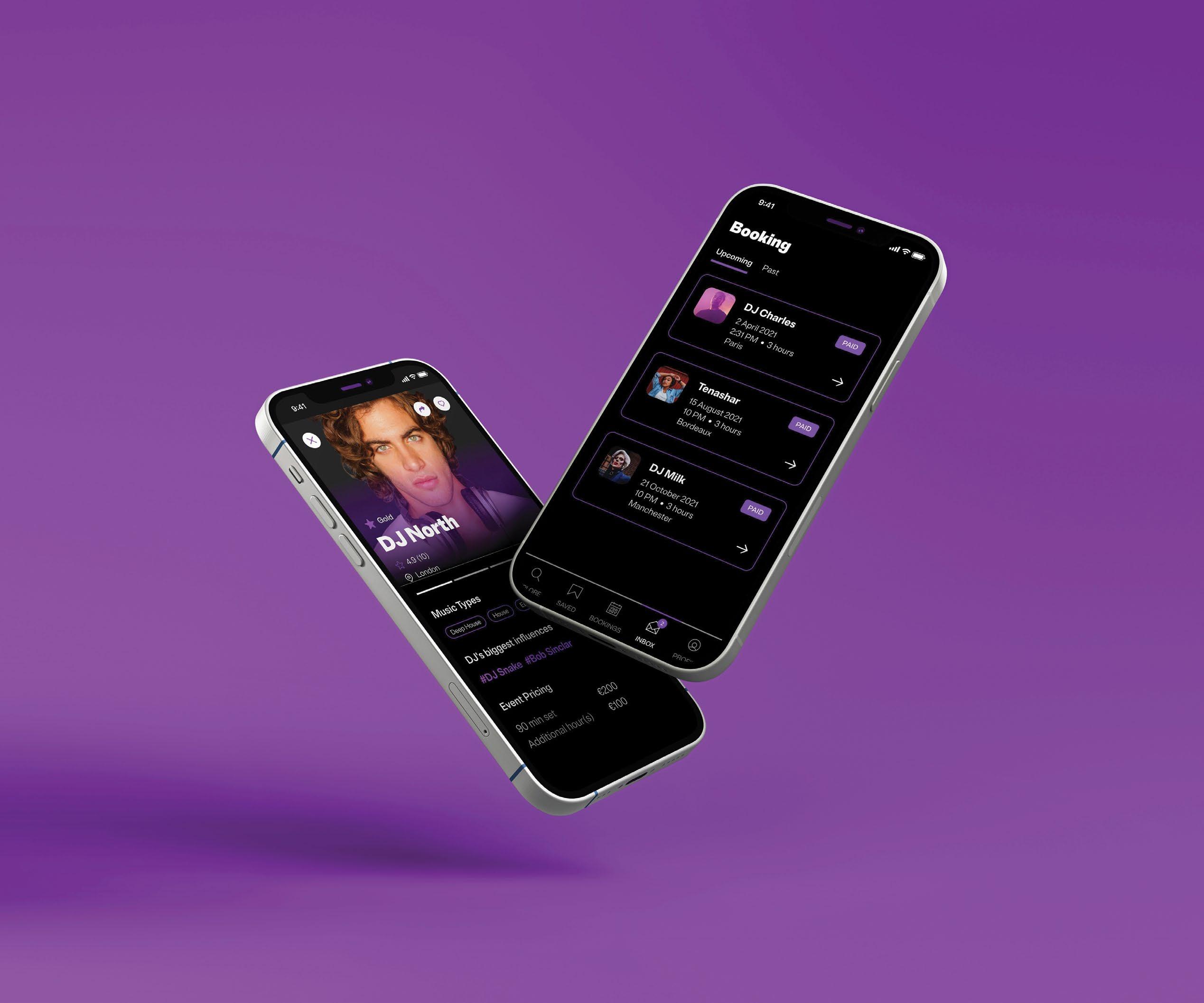
Create your profile
Find new gigs Get paid on time
Referral code: DJX2025
Scan here to sign up
By DJ HAPA
DJing is often portrayed as a solo pursuit – one DJ in the booth, headphones on, making magic happen by him or herself.
But, in reality, nobody gets there alone. Behind almost every working DJ you’ve ever admired is a chain of guidance, encouragement, and advice that helped them take the next step. Mentorship is the hidden ingredient that accelerates careers, sharpens skills, and sustains the culture of DJing itself.
I’ve been fortunate to spend more than two decades performing on stages across the world and another 20 years teaching DJs through my company, The DJ Coach, and my college courses at Mt. San Antonio College. If there’s one thing I’ve seen time and time again, it’s this: mentorship changes everything.
And I often say, there are three people you need in your life: a mentor to learn from, a mentee to teach, and a friend to walk alongside. When you surround yourself with these three, you’re not just building a career, you’re building a community.

One of my biggest mentors was DJ Z-Trip, one of our most talented jocks. He showed me the importance of preparation. I remember watching him put in hours of work on a routine that might only last 10 minutes. His attention to detail and creativity opened my eyes to the difference between being good and being great. That’s what mentors do. They reveal levels you didn’t know existed.
For beginners, mentorship collapses the learning curve. Instead of spending years stumbling through mistakes, you benefit from someone else’s experience: which gear to buy, how to practice, and what not to do at your first gig.
For veterans, mentorship matters just as much. It pushes you to stay sharp, avoid complacency, and keep learning.
And when you combine a mentor, a mentee, and a friend in your life, you create accountability, perspective, and balance. A mentor lifts you up, a mentee reminds you how far you’ve come, and a friend keeps you grounded.
beauty of mentorship: it’s not one-way. Mentors grow as much as mentees.
Mentorship also keeps the culture alive. Our craft has always been passed hand to hand, DJ to DJ. If we don’t guide the next generation, we risk losing that lineage.
Here are several ways mentors speed up the journey: 1. Avoiding Costly Mistakes. A mentor can save you from wasting money on the wrong gear by steering you toward what really matters.
“As a mentor, you don’t need to know everything; you just need to share what you’ve learned.”
Mentors are closer than you think. Look in record shops, DJ schools, conferences, and even online platforms. The right mentor doesn’t have to be the biggest name in town and often the best ones are consistent, professional, and generous with their time.
How you approach matters. Don’t just say, “Teach me how to DJ.” Be specific. Ask how they prep for a gig, how they organize their library, or how they manage nerves before a set. Show that you’ve already put in effort, and respect their time. I see this with my students at Mt. SAC and through Start to DJ. The ones who stand out aren’t always the most talented. They’re the ones who show up prepared, ask thoughtful questions, and act on advice. That makes a mentor want to invest more.
How to Be a Mentor
If you’re an established DJ, you may not see yourself as a mentor, but you don’t need to be a superstar to make an impact. If you’ve booked gigs, navigated setups, or handled contracts, you already have lessons worth sharing.
Being a mentor isn’t about having all the answers. It’s about sharing what you know and being honest about what you’re still figuring out. Often, you’ll find that mentoring sharpens your own skills because teaching forces clarity.
One of my most impactful lessons to date, “Hot Cue Strategy,” actually came from a student. Years ago, a beginner asked me: “What do the colors mean on the hot cues?” At the time, they didn’t mean anything. But that question got me thinking that they should, and eventually I developed a whole color-coded strategy that’s now a cornerstone of my teaching. That’s the
2. Landing Your First Gig. They may recommend you for an opening slot, let you shadow them, or simply prepare you for what to expect at the venue.
3. Building a Network. A mentor introduces you to promoters, planners, and other DJs. In this business, relationships are everything.
4. Learning Professional Habits. From contracts to communication, mentors can help you avoid rookie mistakes that cost money or reputation.
5. Developing Confidence. Sometimes the biggest gift is encouragement. Having someone in your corner can help you push through nerves and step on stage.
6. Expanding Your Vision. Mentors open doors to opportunities you didn’t know existed: weddings, corporate events, teaching, nightlife. They broaden your sense of what’s possible.
In short, mentorship collapses time. It takes what might have taken years to figure out and helps you get there faster, without skipping the lessons.
Wherever you are on your journey, mentorship should be part of it. If you’re newer, seek out guidance and approach DJs you admire with humility and clear questions. If you’re established, consider who in your orbit could benefit from your experience. You don’t need to know everything; you just need to share what you’ve learned.
I’ll reiterate that there are three people you need in your life: a mentor, a mentee, and a friend. They’re like the three bands of EQ on every DJ mixer: highs, mids, and lows. Each on its own doesn’t give you the full picture, but when they’re balanced together, you get clarity, depth, and richness.
So wherever you stand, reach out, give back, and build the kind of relationships that make this craft more than just music. That’s how mentorship turns DJs into artists, entrepreneurs, and leaders.
DJ Hapa is a veteran DJ, educator, and founder of The DJ Coach. With over 25 years of experience behind the decks and more than two decades teaching DJs around the world, he’s on a mission to teach the world to DJ –smarter, cleaner, and more creatively.


By Mason Siegel

New York City – The inaugural Experts Only Festival made its debut at Gotham’s Randall’s Island Park this past Sept. 20-21. Presented by Medium Rare, EMW PRESENTS and Relentless Beats, the event drew more than 25,000 attendees each day with a lineup curated by John Summit and his Experts Only imprint.
Day One sets included Green Velvet b2b Layton Giordani, Pete Tong, Ayybo, TEED, Roddy Lima, Enamour b2b Weska, Kamino, and Eve Lauren.
Day Two brought performances from Kaskade b2b Cassian, LP Giobbi, DJ Seinfeld, Tini Gessler, Kasablanca, Lumia, Tony Y Not and a very special surprise set from the label boss himself, John Summit, early in the day.
From its picturesque views of the city skyline, the waterfront scenes, the grassy scenescape and spacious layout, the festival grounds were a delight, as they were transformed with art pieces and installations, food and drink options, and the jam-packed DJ lineup. It all looked like this:

















Photos by Dan Nilsen
By Jim Tremayne
New York City – As Tao Group Hospitality co-CEO Noah Tepperberg put it: “Marquee 3.0: Opened in 2003. Raised the roof in 2013. Reimagined in 2025.”
Indeed, for more than two decades, Marquee New York has been an ever-evolving, upscale, go-to venue in Manhattan to see top-tier DJs and rising stars. And this past September 25-27, the Chelsea club re-opened with a snazzy redesign – in collaboration with acclaimed architect Jack Hotho – that features a more expansive dancefloor, an updated LED system, and wildly immersive visuals. The weekend’s DJ lineup – Diplo, Steve Aoki and Zedd – wasn’t bad either. It all looked like this:







Look, See: New visuals highlight Marquee.





By DJ Mike Marquez
I am pretty blessed as a DJ. Having grown up the son of a club DJ-turned-mobile DJ, I have been exposed to DJing all my life. Having been a radio DJ at 18, and club DJ the year after, and now, still on the radio, and traveling internationally to do this, I can safely say that I have seen many technological leaps in our field since I first started. Here in 2025, the technology is making things I needed reel-to-reels, DATs, or even a million CD-RWs to do all one-button tasks in software and on controllers. One particular software, Algoriddim’s djay Pro, is particularly blurring the lines between DJ and pro ducer with its innovative Neural Mix feature. However, the biggest problem with djay Pro is the lack of a proper controller that allows people to use djay’s feature set properly.
So, when I saw the layout for the Hercules DJControl Mix Ultra, I thought this would finally be the controller for me. With a layout that a beginner or a professional can use, and one that mimics basic functions from standard gear, along with a simple easy way to use the Neural Mix functionality both through pads and rotary knobs, I was sold. However, reading the specs, my enthusiasm quickly turned to skepticism.

A wireless-first controller with no built-in audio outputs? This could be seen as a major step back, especially since other brands corrected course last year (notably Alpha Theta with its DDJ-FLX-2)? Well, in a desire to get deeper into the djay Pro ecosystem, I asked for a DJControl Mix Ultra to use to explore the software better. For the past three months I have recorded my syndicated “Diaries of a House Head” mixshow four times, taken it to bar gigs around New York City and even went to the park just to get air and play some tunes, and I am left asking: Is the DJControl Mix Ultra a wireless wonder or missed opportunity?
Let’s address the biggest question mark right away: the connections, or rather, the lack thereof. The DJControl Mix Ultra has no headphone jack and no speaker outputs. The only physical port is a USB-C connection used for charging the internal battery, but it also can be used on a computer running djay Pro. However, the controller is designed and marketed to connect to your phone or tablet via Bluetooth.
For any DJ, the ability to cue tracks in your headphones before the crowd hears them is crucial. Thus, since the Ultra has no audio interface (soundcard), it relies on your device and a special splitter cable that
Hercules includes in the box. This cable converts a single stereo headphone jack into two mono outputs – one for your headphones, one for a speaker.
If you are using the Ultra on a laptop, this can be doable since most laptops still have a headphone port. However, given that the controller is marketed to be used wirelessly with phones and tablets, this set-up feels messy. First, you lose stereo sound. Second, since most modern phones and tablets lack a headphone jack, you’ll immediately need to buy a separate USB-C or Lightning port adapter for older Apple devices.
Want to charge your device while you play? You’ll need yet another specialized dongle. While it technically works, it’s an impractical and clumsy solution for any situation involving an audience, even a small house party. At the few bar gigs I used it at, it became a major annoyance and removed the “wireless” concept right away. This is the controller’s biggest limitation, and for many, it will be a deal-breaker right away.
If you can look past the lack of a soundcard, the hardware itself is extremely impressive. Take the DJControl Mix Ultra out of its box and you can feel its solid construction, despite its all-plastic build. It truly is ultra-portable and
slides easily into a backpack. Hercules even includes a protective cover that doubles as a stand for your tablet or phone; however, you’ll have to remove your device’s case for it to fit properly.
Another issue with the plastic cover is it can slide on slick surfaces when you are using it to hold your tablet or phone. However, to get a hard-plastic protective case on a sub-$220 controller is definitely appreciated.
The layout is clean and intuitive. The classic twodeck-and-a-mixer design is perfect for learning the ropes. The faders have a decent feel, and unlike many budget control lers under the $220 price tag, the Ultra gives you a full three-band EQ and a dedicated filter knob for each channel.
Portable Control: Perfect for upstarts & hobbyists.

The jog wheels are small, but they have a nice, weighted feel for nudging tracks into place. A scroll knob and load buttons make browsing and loading tracks easy – it’s a feature often missing from beginner controllers. Also the pads are soft; although not RGB, they’re still bright blue, tactile and a perfect size for this controller.
Connecting to Algoriddim’s djay app via Bluetooth is a breeze. Once you’re in, the fun begins. The eight performance pads I mentioned above unlock a surprising number of creative tools. You get the essentials like Hot Cues and looping, but also advanced modes like Pitch Play for creating melodies and a Slicer for chopping up tracks on the fly.
The standout feature, however, is the Neural Mix integration. The Ultra unlocks the full Neural Mix stem separation in djay without a subscription. With the press of a button, you can split a song live into its core components: drums, instruments, and vocals. Want to create a quick instrumental or an acapella to mix in? Just toggle the vocal stem off. It works incredibly well and opens up creative possibilities usually reserved for much more expensive gear.
“The standout feature is the Neural Mix integration… With the press of a button, you can split a song live into its core components: drums, instruments, and vocals.”
I was also surprised by the wireless performance. The controls are remarkably responsive over Bluetooth, with very low latency for general mixing and EQing. You only notice a slight delay during timing-sensitive actions like quick cuts or scratching, which this controller isn’t really built for anyway.
There are two features that truly set the Ultra apart and show a real thoughtfulness in its design. First is the battery life – the internal battery lasts 10 hours. In fact. I have charged it once since I got the unit back in April. Better yet, the battery is accessible via a simple cover and is a generic type you can replace cheaply. Second is its utilization of Bluetooth. Most people know Bluetooth for delivering wireless music to headphones and speakers; but here, it’s the MIDI signal it sends to the software that’s the key. A simple touch of the jog wheel shows how little latency there is between the controller and software.
That said, one is left to wonder, because of the cost of placing a removable battery, and relying on MIDI only, along with quality pads and a protective cover, did this cost us the perfect entry-level controller by having to omit the soundcard – or was this a design choice?
So, who is it for? Who should buy the DJControl Mix Ultra?
It’s not for the aspiring DJ who dreams of playing in clubs or even for crowds at house parties. But it 100-percent could have been. This could have been the controller for beginner DJs to begin their gigging journey. However, the audio output solution is simply too compromised for reliable live performance.
In addition, as a house/dance-music DJ, the fact that I can control the Neural Mix with the 3-band EQ knobs as well – after pressing the Neural Mix button – makes me feel right at home, as it’s akin to removing the bass of an outgoing song and raising the bass of another.
That said, it is for the absolute beginner who wants to learn the fundamentals of DJing in their bedroom without a complex set-up. It’s for the music lover who wants to experiment with Neural Mix and create fun mixes for themselves. And it’s for the traveling DJ who wants a silent, compact companion to practice and prepare sets on a plane or in a hotel room.
If you fall into one of those categories and prioritize a simple, fully wireless experience for personal enjoyment, the DJControl Mix Ultra is a fantastic and well-executed product.

By Wesley King
One of the notable trends in music production that I’ve witnessed in the past few years is the emergence of truly capable solutions for developing musical ideas and concepts outside of the conventional studio environment. It’s hard for me to identify the original source of the trend, but from early entries, like Apple’s GarageBand for iOS devices, to more recent additions, like Ableton Note, it’s clear that we have some innovative software as the foundation. And with devices like the Yamaha Seqtrak that I reviewed previously, we also have interesting hardware to aid the process these days. There’s never been a better time, honestly, to dip a toe into electronic-music production.
Coming along for the ride, then, it’s no surprise that studio-monitor makers have begun to offer solutions for the on-the-go market as well. Not long ago, I reviewed the KRK GoAux4 Mobile Monitoring System, which is well and truly designed specifically for portable use, with an included go bag.
KRK’s new Kreate Series is
along similar lines, providing active monitors in three different sizes and price points. While not targeted for portable use like the GoAux4s, the Kreate Series is well-suited to situations that lie outside the studio, and, hence, can’t justify the investment in a high-end studio-monitor solution.
In fact, it’s the afford-
ability of the Kreate Series that sets it apart from other entries in the KRK product family. When you add in the convenience of Bluetooth support, the Kreate Series becomes a strong choice for bedrooms, home offices, or other environments where you may need better-than-average sound for music-making, while also having solid output for streaming and general audio as well.
For this review, KRK loaned the Kreate 3. While the rest of the Kreate series
– Kreate 5 and Kreate 8 –are sold singly, the Kreate 3 is sold as a ready-to-use pair for just under $180. (The Kreate 5 is sold in singles for under $170 each, while the Kreate 8 runs just under $230 each.)
Like the GoAux4 system I reviewed previously, the Kreate 3 is more a computer-speaker-like solution, with the amplifiers and connections only on one side (the left), with a satellite speaker tethered to it (the right), with no inputs of its own. (The 5 and 8 models are self-contained, like traditional studio monitors.) I confess that I don’t prefer this configuration, but I understand why KRK


has done it this way, especially for the junior-most model in the series.
Inputs include TRS, RCA, and an 1/8-inch stereo aux, which is great for a phone or tablet. And, as mentioned above, there’s Bluetooth for your convenience as well. You’ll also find an overall gain control, and both HF and LF adjustment boost/cut switches.
The speakers are quite compact and, of course, have KRK’s trademark look with yellow cones. But, how do they sound?
The KRK Kreate 3 pair provides decent sound when one considers the form factor. Delivering a total of 65 watts (both sides combined), the three-inch main driver performs admirably, but perhaps predictably.
These are two-way units, so the ¾-inch tweeter pushes the top end to a rated 33 kHz. But the low end? Here’s where that “predictably” part comes in: The low-end response is just 70 Hz. That’s really just not particularly suitable for pro-level production work that involves deep, thumpy bass, but then, nobody’s going to be doing final mixing or mastering on a monitor with a threeinch main driver.
For routine use and sketching out musical ideas and concepts in rough form, I think the Kreate 3 is a great choice. They sound deceptively good, honestly, as has been my experience with small-driver KRKs over the years; the company simply knows how to do smallform-factor speakers pretty well.
I wouldn’t personally attempt to use the Kreate 3 units for serious mixing and mastering work; but in testing, I did happen to pair them up temporarily with my usual studio subwoofer, which is normally connected to a pair of KRK V-Series 4 monitors as the “A” part of my A/B set-up (the “B” side being a pair of monitors with much larger drivers, and no sub).
The result? Honestly, not bad, but a little wanting compared to my usual monitors in that configuration. But the comparison is unfair; those V-Series 4 monitors I like so much go for just under $420 each. So, I’d have expected the qualitative differences I heard, considering a set of them will set you back $660 more, compared to the Kreate 3s.
One other minor point: the cable connecting the left main unit to the right satellite unit is only six-feet long, which is a
“For routine use and sketching out musical ideas and concepts in rough form, the Kreate 3 is a great choice.”
bit wanting for me. In two locations where I wanted to set them up and leave them for a bit, the cable simply wasn’t long enough to position them where I needed them. And the cable has a proprietary connector, meaning there’s no realistic way to extend that.
In any case, I certainly appreciate KRK lowering the bar for pricing with studio monitors, especially in the current economic climate. If you want to do more serious work, but funds are tight, definitely consider the Kreate 5, or better still, the Kreate 8, as affordable, more compelling options. (I did not, however, evaluate either of the larger models.) That
being said, if you’re truly serious about your music creation, mixing, and mastering, you’ll still need to invest considerably more to get the punch, power, and frequency response that serious work requires. That probably means a subwoofer, room treatments, and everything else that comes along for the ride.
But, as I already said, that’s not where the Kreate 3 is designed to play. I’ve been using them in my home office for general music listening, Zoom sessions, video editing, and basic editing of music beds for those videos, and they’ve been performing quite well in that role. For the price? They’re truly hard to beat.


By Jim Tremayne
Mansfield, Ohio – Bryan Gifford is a DJ whose interests in audio and music never seemed to settle down – and, lucky for him and his Northern Ohio customers, it’s worked out rather well.
When he was young, he learned the craft and the mechanics of DJing – for events and on the air. During his stint in the U.S. Navy, he stepped up his game with off-post gigs – both mobile and club. Crucially, along the way, he also learned the business of mobile DJing.
After moving to Ohio, Gifford launched a DJ company that eventually enjoyed a COVID-era re-brand – thanks to some righteous relief bucks from Uncle Sam. The result? A newly launched brand, SnagaDJ & Photobooth, and success to a degree that he also began another company that makes Powerbooth One, a unique DJ booth that he exhibited at the recent DJX’25 in Atlantic City, N.J.
We recently caught up with Gifford, 55, to hear the busy single-system operator’s story.
DJ LIFE: What got you interested in music?
Gifford: In the third grade, we did a Christmas gift exchange and my gift was Michael Jackson’s “P.Y.T.” on a 45 record. Columbia House was my favorite bill back in the day.
DJ LIFE: How’d your DJ career get started?
Gifford: It started when I was in vocational school and received my FCC license to DJ on-air. DJing was my life

right away. I always had interests in professional-audio equipment. From there, I was asked to DJ our school’s homecoming, and was hooked. During high school, I ended up DJing the overnight shift at a local AM jazz radio station, a popular skating rink, and our local vocational school radio station. I did all this before starting my own mobile-DJ service there in Richmond, Va.
DJ LIFE: How did things progress?
Gifford: After high school, I joined the Navy, as my recruiter told me that all ships had their own radio stations and my rate was the ones who the manned those jobs. Needless to say, my type of ship did not have a radio station.
DJ LIFE: Those darn recruiters…
Gifford: Right? I served four years – 1991 to 1995. I was an Operations Specialist. During my time in the military, stationed in San Diego, I learned to beatmix on Technics 1200s at The Trophy Lounge, a local club. From there, I moved to Offutt Air Force Base in Nebraska. There, I worked my way from being a new mobile DJ [working for a company], using their equipment and getting $75 a gig to being an employee/con-

By Jordan St. Jacques
Small businesses across the country, the continent and even the globe rely heavily on reviews – that includes the DJ industry, of course.
Peer-2-peer recognition and respect count for a heavy weight in a customer’s purchase decision, and rightly so. However, the system is not perfect.

We’re all stuck dealing with the whims of the big review sites, with little or no recourse for “bad actors” posting reviews, whether it be uneducated customers or even malicious “reviewers.” Clearly, in order to present themselves in a more positive light, DJ companies need to do all they can to prevent such bad reviews. Let me show you what I use for such a purpose:
The Tool: SocialJuice
This is a tool that I have been using for a few years now. In short, it gives you a wizard that allows you to point your past customers to a video-creation process, which they can run through on their laptop or a mobile device. Once your customer has created their testimonial video, it gets held in an easy-to-use backend that requires your approval before it is available to the public. You can then embed your video testimonials in any number of formats right on your website, adding a video element to your reviews that is just unavailable on the big review platforms.
Example - Client Testimonials
Go to the home page here.
Scroll down to the section called Satisfied Clients, and take a look.
Here’s another example.
Scroll down to the section called Some Reviews
The Process: How To Use
Getting right into it, here are the steps to set this up.
Set up your video-creation wizard, and send the link to some of your best customers so they can create their own video. Set up the display widget on your website (you need at least three publicly viewable videos in order for the main widget to display properly), including a button for people to click to go to the video-creation wizard.
Video-Creation Wizard
Once you are inside your SocialJuice backend, you’ll need to go to the section called Collect Testimonials. From there, click on the Edit Form button in order to configure the settings for

your Form Collection link.
There are many settings that allow you to configure the Titles, Body Text and Images. Overall though, you should see something like this when you’re done: Video Collection Wizard Example
Approving your videos is done from the main Video Summary page, as seen here. Simply preview your videos, and push the ones that you approve to Public.
There are a few different Display Types, here are the main two.
For myself, I prefer the Slider Widget, which is the same as the example I mentioned above on our own site. Clicking on Slider Widget brings you to this page.
The code snipper that you need to embed is viewable right under the preview of the video layout. It’s a simple iframe, which any decent web guy will be able to handle.


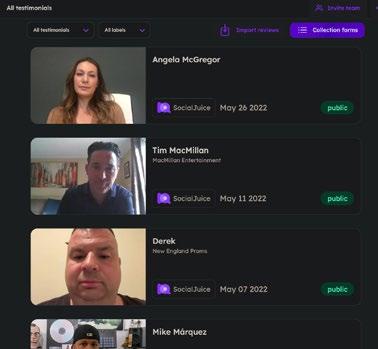

Using SocialJuice offers a much more productive tool for video testimonials and reviews. Most importantly, it puts the entire process within your control – the big review platforms don’t allow you any sort of control whatsoever. Of course, using SocialJuice doesn’t stop a disgruntled customer from posting a review on Google, Facebook, TK/WW or similar, but it’s a good start. Perhaps showcasing actual videos from your satisfied customers will allow you to get ahead of any potential problems down the road.
You’re free to sign up on SocialJuice on your own. The owners name is Sander, and he’s very helpful.
Jordan St. Jacques is the President/Lead Digital Marketer at Digitera.Interactive in Ottawa, Ont., Canada.


AlphaTheta has released the CDJ-3000X, professional DJ player. The unit offers speedy access to online music, as it brings enhanced connectivity through is access to cloud storage and music-streaming services. With its built-in Wi-Fi, DJs can connect to the internet without an LAN cable, streamlining setup in any environment. The front panel also features an NFC touchpoint, allowing instant access to online media simply by holding a smartphone over the reader. Advancements in core performance aspects – usability, playability, and sound quality – have also been made in the design of the unit. DJs can enjoy smoother, more intuitive browsing on the new 10.1-inch hi-res capacitive touchscreen, which offers better visibility and usability, and control the jog wheel more precisely, thanks to its wider range of tension adjustment. Rebuilt play and cue buttons bring extra durability and, with a new high-performance DAC and redeveloped power supply, DJs can enjoy powerful and hi-res sound that balances punch with clarity.


AlphaTheta Corp. 2050 W 190th St #109 Torrance, CA 90504 (424) 488-0480 www.alphatheta.com
Rane, an inMusic brand, has released the RANE ONE MKII motorized DJ controller. Designed with open-format and turntablist DJs in mind, the unit offers an authentic vinyl-style turntable with a modern digital edge – delivering the kind of responsiveness and versatility needed to adapt any track to any crowd. Features include: motorized platters with high and low torque; 29 internal hardware FX with dedicated display; software FX and Channel FX; 16 RGB performance pads with 10 pad modes and one user-customizable mode; secondary performance pad buttons with eight pad modes; dedicated Instant Stem Acapella and instrumental buttons; two XLR combo microphone inputs; and two precision-feel channel faders with tension adjustment.
RANE/inMusic 200 Scenic View Dr. Cumberland, RI, 02864 (401) 658-3131 www.rane.com
Audio software company Serato has unveiled one of its most highly requested features to date: a direct integration of Spotify into Serato DJ Lite and Pro. By linking their Spotify Premium and Serato accounts, DJs can seamlessly access Spotify’s library of over 100 million tracks, as well as their saved playlists – both publicly and personally curated – directly within Serato DJ Pro and Serato DJ Lite. DJs can stream and mix tracks from Spotify in real time, with support for up to four-deck playback simultaneously. This milestone gives DJs of every level the freedom to curate, prepare, and play like never before. For the first time, DJs will be able to curate music on the go in Spotify’s mobile app, synced directly to Serato DJ – jocks can build and update playlists on the Spotify mobile app, then find them directly within their Serato DJ library.
Serato 80 Greys Ave. Auckland, 1010 New Zealand (800) 515-8268 www.serato.com


Yorkville Sound has released two new YXL column PA systems – the YXL Tower10 and the YXL Tower12 – that are designed for performers and presenters needing a full-range solution that’s powerful, lightweight, and easy to use. These new models feature a 10- or 12-inch subwoofer, four 3-inch midrange drivers, and a high-frequency compression driver. The integrated 3-channel mixer offers mic, line, instrument, and Bluetooth connectivity including wireless stereo playback between two systems. Three voicing modes optimize the sound for live music, recorded playback, or speech. Both offer 1,550 watts of peak power, and each weighs less than 42 pounds. The speaker column can connect directly to the subwoofer or on the included extension for additional height, and each system also includes a subwoofer cover and gig bag for easy transportation. Yorkville Sound USA 4625 Witmer Industrial Estates Niagara Falls, NY 14305 (716) 297-2920 www.yorkville.com
Germany’s Reloop, distributed State side by American Music & Sound, has released the RP-7 professional 7-inch turntable system. Launched as a tribute to 45s vinyl culture, the direct-drive RP-7 features: brushless DC motor with 2.5 kg/cm torque for cueing and scratching; precision-ma chined, die-cast aluminum platter; finely tuned motor characteristics; height-adjustable VTA tonearm base; straight copper tonearm with internal rubber damping for tracking and resonance; stati cally balanced, straight tonearm system with hydraulic lift; universal cartridge system connection; precise three speed motor (33-1/3, 45 and 78); clickless tempo fader and adjustable tempo range +/- 8, 16 or 35-percent; and pitch reset toggle button.

Reloop/American Music & Sound 310 W. Newberry Road Bloomfield, CT 06002 (800) 431-2609 www.reloop.com
Electrotec Audio has released the Stage One wireless portable loudspeaker. Light, yet powerful, Stage One houses the raw sound of a live performance in a 40-pound box. This one-piece cabinet uses a unique design that takes a full 320 watts RMS divided into a three-way, all-in-one cabinet utilizing Electrotec’s TRI-AC system – using one pro neodymium 10-inch bass driver, one pro neodymium 8-inch mid-range drive and one pro neodymium 1-inch compression horn. They can be wired in and used as monitors or, using a wireless system designed by SKAA, users can allow you to move the speakers comfortably in an area of about 150 feet from the transmitter. The cabinet is pneumatically compressed to consistent sizing, and coated with phenolic epoxy resin that is weatherproof and durable as well as environmentally safe and recyclable. Can play up to 120 hours on a single charge.
Electrotec Audio
17835 Newhope Street, Ste. A Fountain Valley, CA 92708 www.electrotecaudio.com





Building on the legacy of the TR-808 and TR-909, Roland has released the TR1000 Rhythm Creator, the first Roland drum machine in over 40 ye true analog voices, coupled with the latest digital sound and sam pling technologies and a performance-focused user interface. The unit’s analog engine features 16 of the most coveted circuits from the TR-808 and TR-909, recreated from the original designs with detailed engineering and modern components. Alongside the TR-1000’s analog voices are powerful digital sounds driven by Roland’s latest advancements, including 21 circuit-bent TR-808 and TR-909 models built with Analog Circuit Behavior (ACB) technology, FM percus sion, virtual analog tones, and a deep PCM library for sonic exploration and fresh textures. Sample tools are integrated into the TR-100 including stereo sampling and resampling, BPM sync, seamless time-stretching, and non-destructive slice editing. The onboard 64 GB memory comes with a curated collec tion of 2,000 samples, with 46 GB free for user captures, edits, and sample imports.
Roland 5100 S. Eastern Ave. Los Angeles, CA 9004 (323) 890-3700 www.roland.com


Pro Sound Effects, creator of professional sound-effects libraries, has released CORE 7, the latest update to its signature sound-effects library bundle series. With more than 1.3 million sounds spanning more than 650 categories, including 112,000 new sounds and 13 new libraries, CORE 7 empowers producers and sound professionals working in a variety of media. Features include: fast workflow, as detailed metadata with Universal Category System (UCS) means better search results and huge time savings in finding the perfect sound; easy platform access, as users get instant cloud access via website and desktop app and can download locally for effortless integration into existing workflow; and simple licensing with lifetime, royalty-free, commercial usage. Custom multi-user licensing agreements reduce the risk of non-compliance and legal headaches. Available via subscription or lifetime license. Pro Sound Effects www.prosoundeffects.com

Denon DJ has released the SC LIVE 4 WHITE – new colorway of the all-in-one, 4-channel standalone DJ controller. The SC LIVE 4 WHITE takes everything DJs got from the original – Engine DJ software, Apple Music streaming, onboard speakers, lighting control, and standalone Stems – and delivers it in a sleek new white finish. No laptop required, the unit features powerful FX, dynamic controls and a familiar layout modeled after Denon DJ’s flagship SC6000 PRIME and mixer series. Other features include: Built-in Wi-Fi for music streaming (including Apple Music, TIDAL, Beatport, SoundCloud Go+ and more) for convenient access to virtually any track from any genre, as well as curated playlists and music charts; familiar and intuitive club-style layout with built-in Main FX, Touch FX, Fader FX, and Sweep FX; compatibility with top DJ software (Engine DJ, Serato DJ, Virtual DJ, and Algoriddim djay).
Denon DJ/inMusic 200 Scenic View Dr. Cumberland, R.I., 02864 (401) 658-3131 www.denondj.com








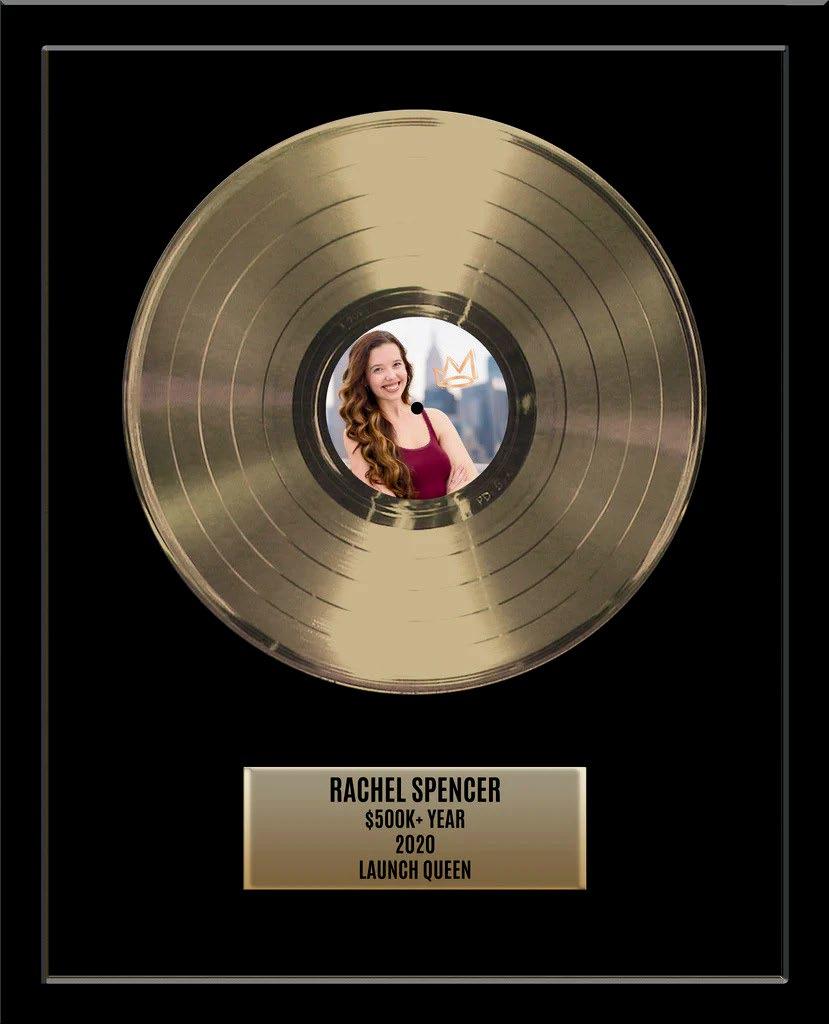








Pioneer DJ has released the DDJ-FLX10-W, a 4-channel performance DJ controller for rekordbox and Serato DJ Pro. With a sleek, all-white finish and the same features of the original DDJ-FLX10, this version is designed for the visual era of music creation. This new color is perfect for live-streamers, content creators, and DJs who want their gear to look as sharp as their sound. It also includes a host of brand-new features, including STEMS technology, which enables new cre ative possibilities, such as the easy performance of mash-ups on the fly with no need to prepare tracks in advance. Just load the reg from your music library and create remixes and mash-ups on the dependently manipulating the three key parts of the music: vocals, drums, and inst (other instruments including bass and synths).
AlphaTheta Corp. 2050 W 190th St #109 Torrance, CA 90504 (424) 488-0480 www.alphatheta.com



Ableton Live 12.3 is now in public beta. The new update brings new features to all editions of Live 12, along with new expressive features for Push 3, plus a new audio effect for Move, Note, and Live Lite. Features include Stem Separation, which allows users to isolate vocals, drums, bass and other stems from any audio clip in Arrangement or Session View, or in the browser; Splice integration, which allows users to access the Splice library inside Live’s browser and audition Splice samples in synch and in key; and Bounce Groups and Paste Bounced Audio. Live 12.3 gives Push 3 users new ways to create with the instrument’s expressive pads – and makes Push even more flexible as a standalone music making hub. Ableton Schönhauser Allee 6/7 10119 Berlin Germany (646) 862-7998 www.ableton.com
ADJ has expanded its Hydro Series with the introduction of the Hydro Flex L7 – a compact yet powerful IP65-rated LED wash fixture designed to deliver versatile effects and exceptional output, rain or shine. With its rugged construction, potent lime-infused LEDs, pixel control, and wide zoom range, the Hydro Flex L7 is the ultimate flexible solution for festivals, outdoor events and more. Packing plenty of punch into its streamlined form, the Hydro Flex L7 is ideal for applications where space is limited but performance is non-negotiable. Despite its smaller footprint, this delivers commanding color washes and striking beam looks. At the heart of the fixture are seven powerful 60-Watt RGBL LEDs, capable of generating vibrant saturated colors, subtle pastels, and crisp white tones (with color temperature variable between 2700K and 10,000K).
ADJ 6122 S. Eastern Ave Los Angeles, CA 90040 (323) 316-9722 www.adj.com


Image-Line has released a major update to FL Cloud, the addon service to FL Studio that gives users access to over one million royalty-free samples, AI-powered mastering, music distribution, and over 75 plugins. With a host of fresh and innovative tools, FL Cloud delivers an even deeper, faster, and more personalized music-making experience for producers of all levels. New tools include: sounds from two recently launched labels, INFLUENCE (trap, hip hop and drill) and NinetyFour (mid-‘90s hip hop); more intelligent search and faster workflow; personalized feeds; Mosaiq by UVI plug-in; real-time AI mastering; and thousands of FLEX presets.
Image-Line NV Franklin Rooseveltlaan 348 D
B-9000 Gent Belgium 32 9 281 15 33
www.image-line.com
Volumo is a new music-download platform launched from Europe, but built with DJs everywhere in mind. At a time when many platforms are driven by streaming metrics and algorithmic trends, Volumo is putting curation, community, and fair artist economics at the center of the experience. Every release on Volumo is hand-picked by real DJs and genre experts – no banner clutter, no pay-to-play, just music that matters to working DJs and underground scenes. Volumo offers a 75/25 revenue split in favor of artists and labels, with monthly or on-demand payouts. DJs can create public, shoppable charts, and earn 5-percent commission when someone buys music from their selections. Volumo has customizable pages where artists and labels can add bios, social links, images, videos, and truly own their identity on the platform.
Volumo Music OÜ
www.volumo.com

Now DJs can display vinyl art in style, as the Glorious Record Vinyl Frame transforms beloved vinyl records into stunning wall art, highlighting both the album cover and the vinyl itself. Crafted from high-quality aluminum, this frame offers a sleek and durable design to elegantly display favorite vinyl records as part of an artful interior. Featuring a magnetic clip opening on the side, the frame allows for effortless swapping of favorite records, making it easy to change the display. A precisely fitted foam inlay ensures secure positioning of the record and cover, while a fixing screw provides additional stability. The slide-in acrylic glass front protects records from dust and damage to maintain a pristine appearance, allowing treasured vinyl to be displayed, and adding an artful touch to any living space. Installation is simple with the two wall brackets included for easy and secure mounting.
Reloop/American Music & Sound
310 W. Newberry Road Bloomfield, CT 06002 (800) 431-2609 www.reloop.com

















“Addicted” (Extended Mix)
Hutcher (feat. V. Cartier)
October Records
This quality jam from Down Under comes courtesy of rising studio star Hutcher, who’s soon dropping “Spotlight,” a five-track EP. The full EP’s dopeness aside, one tune, in particular, struck a chord: “Addicted,” his collab V. Cartier, an L.A.-based vocalist-and-more. It’s a super-soulful crossover that lifts your mood from the first note. Combining Cartier’s toptier R&B vocal range with Hutcher’s zappy synth-driven housey production style, “Addicted” delivers a natural high of genuine sonic chemistry.
– Joe Berinato
“Lonely No More”
DJ Dove Toolroom
This new one on Toolroom from DJ Dove is a wicked house cut that would be equally at home on their sister label Fool’s Paradise. Built around a heartfelt vocal hook and driving groove, this works equally well on soulful and more driving dancefloors.
– Curtis Zack
“I Wanna Taste Your Love” (Smoove Extended Remix)
Joe Simon
Ace Records/Spring Revisited Simon’s soul classic gets a serious dancefloor upgrade on this remix from Smoove, as part of the stillamazing Spring Revisited project. Staying true to the soul roots, while adding modern crisp beats, this one oozes energy, style and class.
– Curtis Zack

“Power”
Alex Preston
Hugs Records
“Freedom Express”
Platinum City feat. Sara Kusi Do It Anyway
This, the second release on the Do It Anyway label, sees Phil Rose don his Platinum City moniker for a silky-smooth slice of modern disco. With brass stabs perfectly crafted around vocal chops, this is one infectious cut that demands you dance.
– Curtis Zack
Here you have a simple, yet badass combo: a solid, pulsating-and-shuffling 4/4, a pure, groovy bassline, plus light-and-easy chord jabs with a gospel sample injection. Add it up and you’ll hear why this new jam by Aussie producer Alex Preston on Hugs is so effective. With releases already on Fool’s Paradise/Toolroom, Another Rhythm, and others, it’s no wonder Preston’s latest hits house lovers right in their groove zone.
– Joe Berinato


Crossover Pool Chart
■ North East Record Pool
■ Mixx Hitts Record Pool ■ Ritmo
